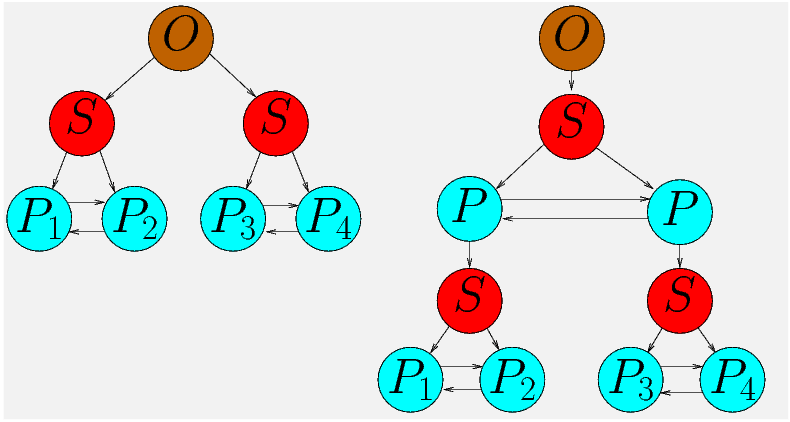
Although a P2PSP team can scale easily, there are several reasons why it might be desirable to split a large team into smaller ones. For example, if a team fails (for example, the splitter stop sending blocks to the peers), other teams would not be affected by this issue.

Again, a solution to these problems consists in partitioning the big team into a collection of smaller ones. The simplest configuration makes use of the concurrent service that most of streaming servers can perform (see the schema at the left in the Figure 6). However, if the source node can not serve multiple streams, we can divide our big team following a tree structure where the root of the tree is the splitter connected to the source and peers are the leafs of the tree (see the schema at right in the Figure 6).